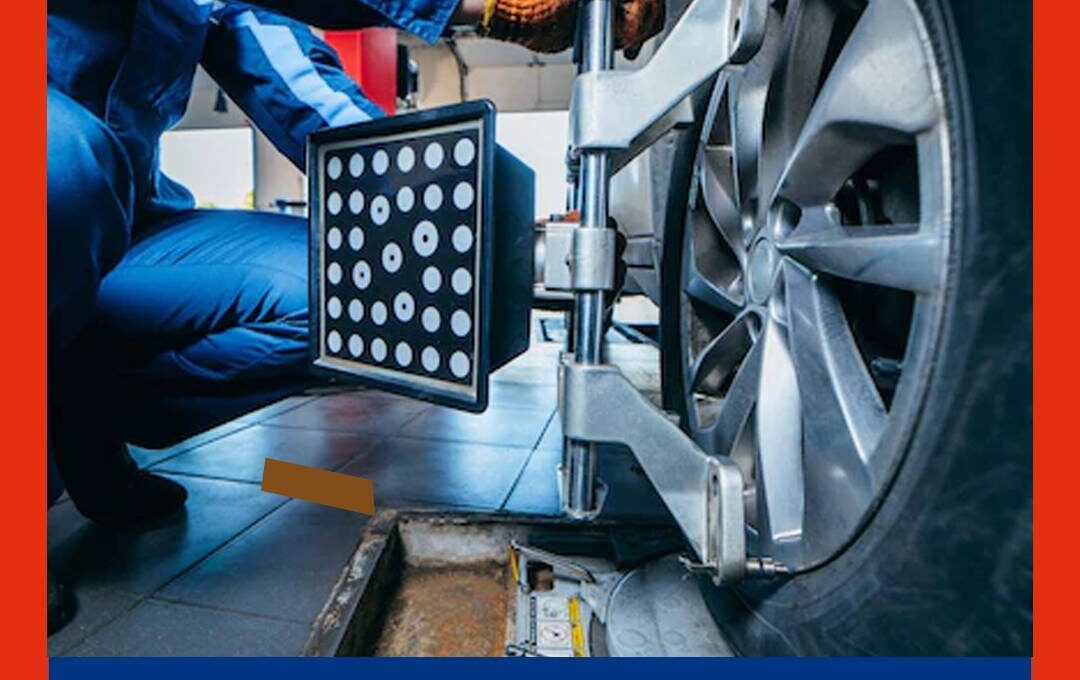Your vehicle’s tires are vital in ensuring a safe and smooth ride. However, just like any other component, tires are susceptible to various issues that can impact their performance and compromise your safety on the road. In this blog post, we will explore five of the most common tire problems many drivers encounter and provide practical solutions to address them effectively.
By understanding these tire problems and implementing the recommended solutions, you can keep your tires in optimal condition, enhance their lifespan, and enjoy a worry-free driving experience. We will also detail how to do the tire penny test.
Let’s dive in and discover how to tackle these common tire problems head-on!
Uneven Tread Wear
Uneven tread wear is a standard tire problem for several reasons, such as improper alignment, over or under-inflation, or even suspension issues. It is essential to address this problem promptly, as uneven tread wear can lead to decreased traction, reduced fuel efficiency, and compromise the overall performance of your vehicle.
To address this issue, check the tire pressure regularly and ensure it aligns with the manufacturer’s recommendations. Additionally, have your tires rotated periodically to promote even wear across all four tires.
If you notice any signs of misalignment or suspension problems, consult a professional mechanic who can help diagnose and address the issue. Remember, maintaining proper alignment and tire pressure is critical to preventing uneven tread wear and extending the life of your tires.
Low Tire Pressure
Low tire pressure is another common problem affecting your vehicle’s performance and fuel efficiency. It is crucial to check your tire pressure regularly and ensure they are correctly inflated according to the manufacturer’s recommendations.
Low tire pressure can occur due to various factors, including temperature changes, punctures, or natural air leakage over time.
Invest in a reliable tire pressure gauge to address this issue, and check your tires at least once a month. If the pressure is low, inflate them to the recommended level using an air compressor or visit a nearby gas station.
Tire Punctures and Leaks
Tire punctures and leaks are frustrating issues that can happen unexpectedly. Whether it’s a nail on the road or a small leak, addressing this problem promptly is essential to prevent further damage and ensure your safety.
If you notice a puncture or suspect a leak, examine the affected tire carefully. Look for any visible objects like nails or glass shards that may have caused the puncture. If it’s a small nail or screw, you may be able to remove it yourself using pliers or a similar tool.
However, seeking professional help for larger punctures or leaks is recommended. A certified tire technician can assess the damage and determine the best action, whether patching the tire or replacing it altogether.
Tire Alignment Issues
Proper tire alignment is crucial for maintaining the stability and handling of your vehicle. Misaligned tires can lead to uneven tread wear and poor fuel efficiency. If you notice your car pulling to one side or experiencing steering wheel vibrations, it may indicate tire alignment issues.
To address this problem, it is best to take your vehicle to a professional mechanic or tire shop. They have the necessary equipment and expertise to accurately assess the alignment and make essential adjustments. Regular tire rotations and alignments are recommended to ensure even wear across all tires and extend their lifespan.
Worn Out or Bald Tires
Worn-out or bald tires pose a significant risk on the road, especially in wet or slippery conditions. Check the tread depth regularly using the “penny test” or looking for tread wear indicators.
The tire penny test is a simple and effective way to check the tread depth of your tires and determine if they need replacement. Here’s how to perform the tire penny test:
Grab a penny: Take a penny and hold it with President Lincoln’s head facing you.
Select a tire: Choose one of your vehicle’s tires.
Locate the tread grooves: Look for the grooves on the tire’s tread pattern. These are the indentations that help provide traction.
Insert the penny: Place the top of the penny into one of the tread grooves, ensuring that Lincoln’s head is facing downward into the groove.
Observe the tread depth: Check how much Lincoln’s head is visible. If the tread completely covers the top of Lincoln’s head and cannot be seen, it indicates that your tire tread depth is sufficient and meets safety standards.
Repeat the test: Repeat the process on multiple locations across the tire and other tires to comprehensively assess their tread depth.
Assess the results: If you can see the top of Lincoln’s head or any significant portion, your tire’s tread depth is worn and approaching needing replacement.
Keep in mind that the minimum safe tread depth varies by jurisdiction. Still, generally, if the tread depth is below 2/32 of an inch (or about 1.6 millimeters), replacing the tire for optimal safety and performance is recommended.
Performing the tire penny test regularly, ideally, once a month, can help you stay aware of your tire’s condition and take timely action if needed. If you have any doubts or concerns about your tire’s tread depth, it’s always best to consult a professional tire technician for a thorough inspection and guidance.
If the tread is worn, it’s time for tire replacement. Choose tires with the appropriate size, tread pattern, and load capacity.
By being aware of these common tire problems and knowing how to address them, you can ensure your tires are in top condition for a safe and comfortable driving experience. Remember to perform regular tire inspections, maintain proper inflation, and seek professional assistance. Prioritize tire maintenance to enjoy better traction, fuel efficiency, and longer-lasting tires. Stay safe on the road!
The post 5 Common Tire Problems and How to Address Them appeared first on Barry's Auto Body.
